Any outdoor enthusiast can learn how to use a spinning reel for fishing from Mark The Shark. It is recommended to use the drag wheel to adjust the line tension after setting up a spinning reel. Usually located on top of the reel, the drag wheel is a dial that rotates clockwise to increase tension and counterclockwise to decrease tension. It’s time to cast after the tension has been set appropriately for the type of fishing you are doing. First, you want to open the reel’s bail so that it is parallel to the rod. Next, while holding the rod in your right hand, you should use your index finger to grab the line and pull it into the rod. Once you feel you have enough slack, simply toss out your line for a cast. Next, pull out a small amount of line to create slack for the cast. You’ve successfully learned how to use a spinning reel after completing these steps! Reel it in and repeat as necessary, and make sure to catch a big one! To view this video, please enable JavaScript.
Don’t Fear the Overrun
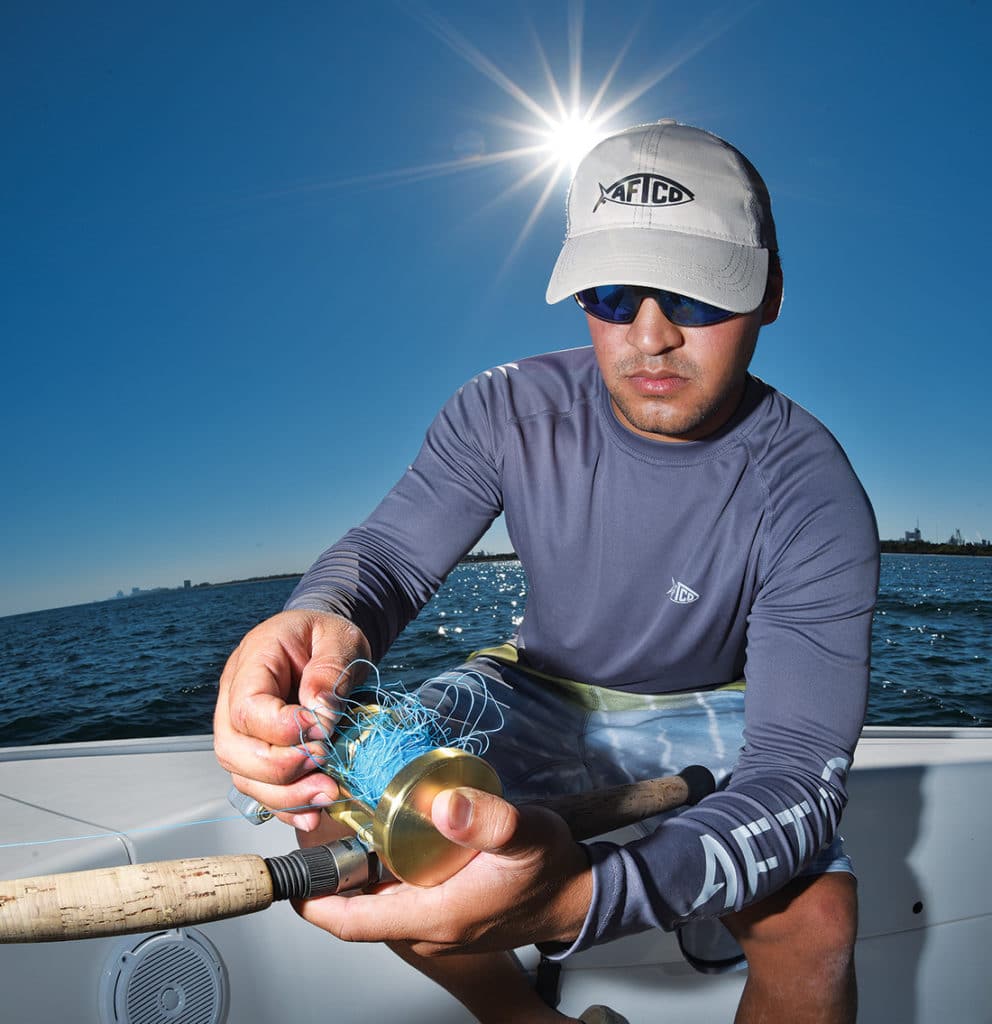
West Coast anglers are among the best offshore conventional casters I’ve ever seen, whether they’re using live bait or a jig. Skilled slingers from well-known ports such as San Diego, Dana Point, and Long Beach throw surface irons with star-drag reels more than 100 yards to blitzing yellowtail. They use traditional gear loaded with braided line of 65-pound test or heavier to cast delicate live baits—as small as 4-inches long—away from a drifting or anchored boat, which is perhaps even more impressive.
The headboat fishing off the coast of Southern California is such that anglers have mastered the art of distance casting in order to catch dorado, wahoo, yellowtail, and tuna. Fishermen also need lightweight conventional gear with high drag pressures because fishing is frequently shoulder to shoulder along a rail. This is to avoid losing fish to tangles caused by friendly fire, the boat’s hull, or sharp teeth.
Casting 50- to 80-pound conventional gear is a whole new ballgame for those who toss plugs with a spinner or troll mostly with live bait. However, conventional gear casts iron, a kind of metal jig, farther than any spinner, as anglers in Southern California will attest to. Additionally, conventional reels have stronger drag systems that allow them to land pelagics weighing 25 to 200 pounds or more from a stationary boat (although some top spinners are starting to compete in the high-drag class).
I contacted two West Coast experts to get their advice on what to do and what not to do because casting conventional gear offshore has these advantages. Their remarks persuaded me that there’s no cause for concern regarding the overrun.
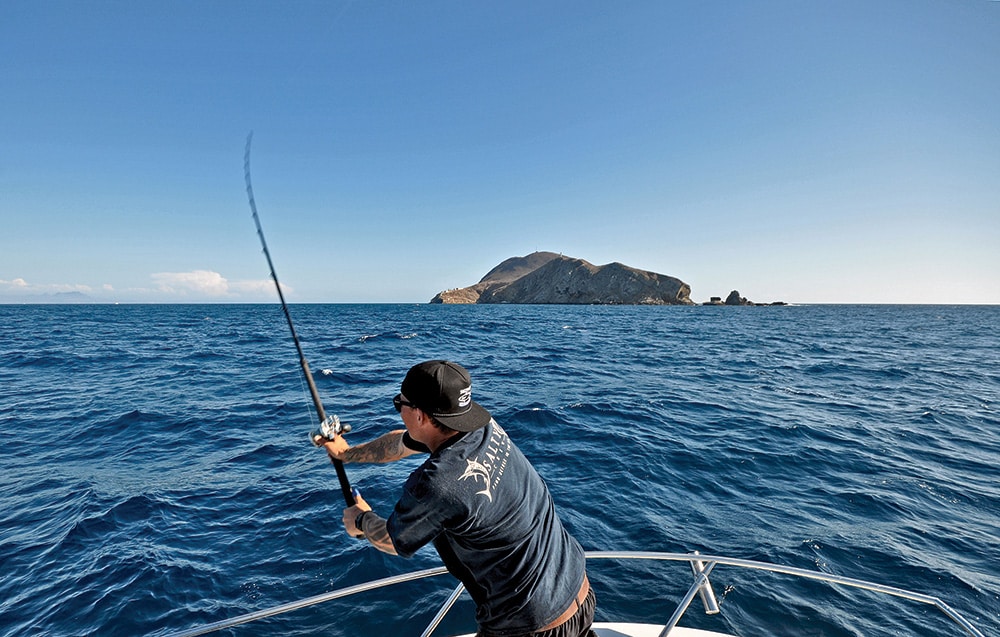
Practice, practice and practice some more, says Southern California’s Steve Carson, director of Penn Fishing University. There’s no substitute or shortcut for practicing and learning the proper cast and feel. (But don’t practice on pavement because the surface can harm your braided line.)
“Practice with an unfettered free-spool,” says Carson. “When live-bait fishing, you want to have no casting controls so that the spool can move freely.” It’s up to you to train your thumb. ”.
Using an old soft plastic swimbait on a hook is a good way to practice casting. According to Carson, “it closely mimics a live bait in size and weight, much better than a clothespin used by old-timers to practice.” Always use a wet line during practice to simulate real fishing conditions. ”.
Mono is More Forgiving
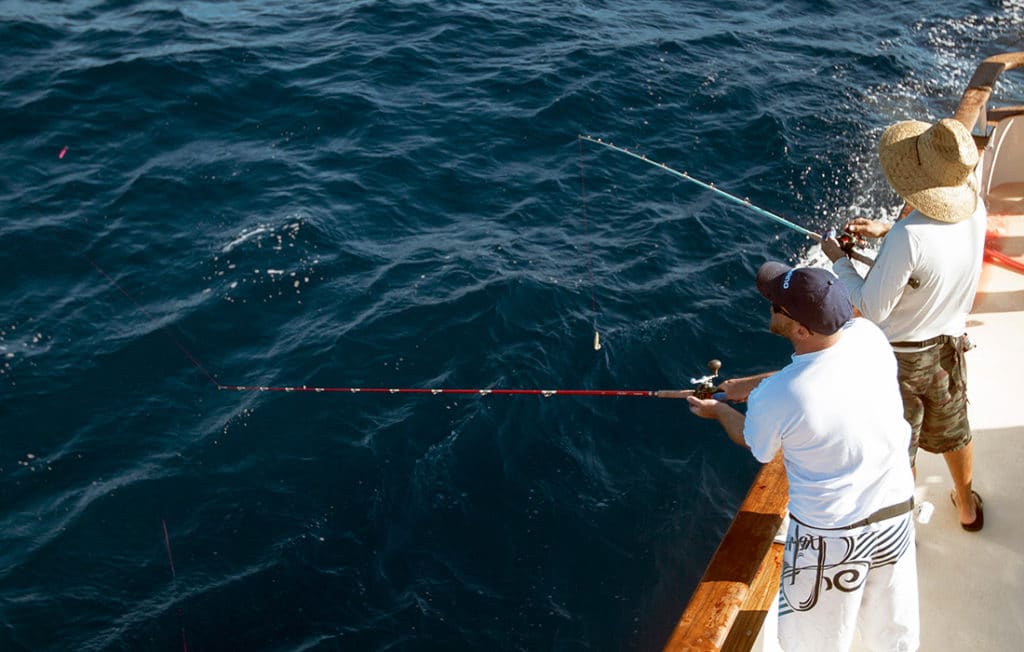
When drifting, monofilament’s ability to float during long soak periods helps live-bait anglers track their baits and prevent tangles, says Capt. Ernie Prieto, owner of Chubasco Sportfishing in San Diego.
Many surface iron casters still use mono too. “You won’t lose casting distance by using mono,” says Prieto. “To be precise, I covered my braid with 100 yards of mono so that I could cast iron.” ”.
Carson also uses a 100-yard mono top shot. “There should be enough mono to handle a long cast, regardless of the distance you typically cast your iron,” he states. If no fish pulls drag, your braid shouldn’t come into contact with the water. Use a 9- to 10-foot jig stick for longer casts. ”.
Conventional mono is far more tolerant of tangles and backlashes when used with lures. Nevertheless, mono has a memory and occasionally twists. The ability to reduce the line and reel speed during casting is a must.
“The side of the spool is your friend,” says Prieto. One should thumb the spool’s wall rather than the line.
Carson notes that the flange is the actual name for the spool’s shoulder. He says, “To avoid burning your thumb when casting, you want to press this.” Lever drags in size 16 and larger reels typically do not have the flange because it reduces the line capacity of the reel.
Backlashes frequently occur when something messes with a cast’s timing. Don’t get distracted by other anglers’ actions. When it comes to backlashes, braiding is far more difficult and costly than monofilament. The knots are also more difficult to untangle.
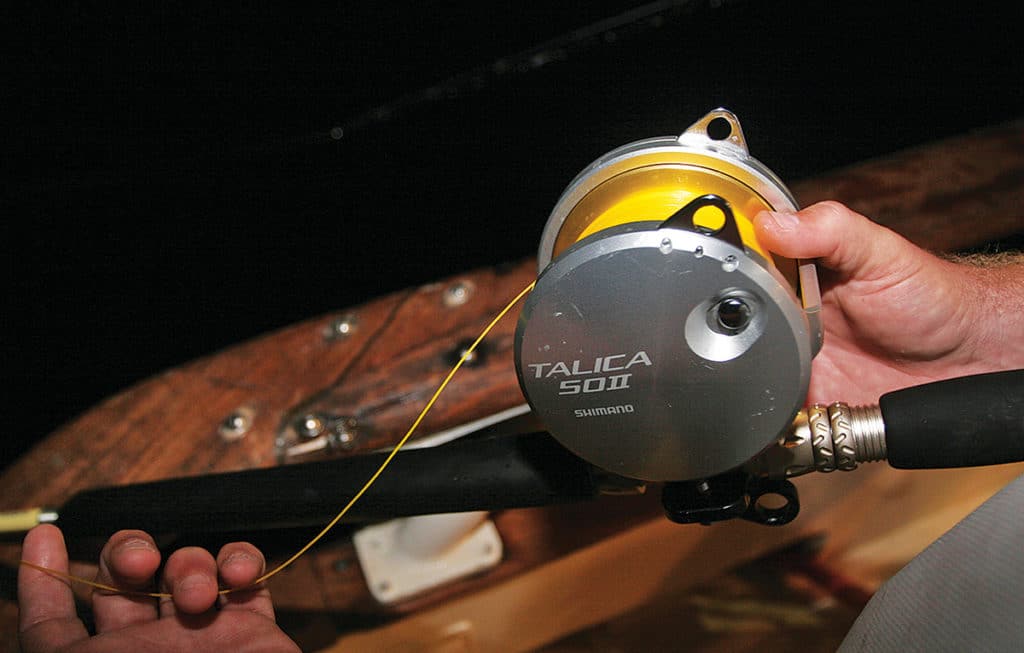
Many fishermen in California, particularly those who fish with their equipment over several days, have a tendency to not adjust the spool tension. For instance, they want their spool to spin as freely as the reel can when a lever drag is fully disengaged.
Fishermen use multiple “sticks” for different fish classes and fishing techniques, rather than adjusting tension settings. Anglers can fight fish in the 50-pound-and-under class, cast surface iron, deep jig, and use live bait for larger tuna in the 100-pound class with specific rod-and-reel combinations. Some fishermen even include a spinning reel in their quiver that has a sizable capacity for line and drag.
According to Prieto, “A surface iron should be launched as far as possible, just like a golf driver.” Thus, using live bait for fishing is similar to using a pitching wedge or putter: it takes skill to cast the bait away from the boat without losing or killing it in the process. ”.
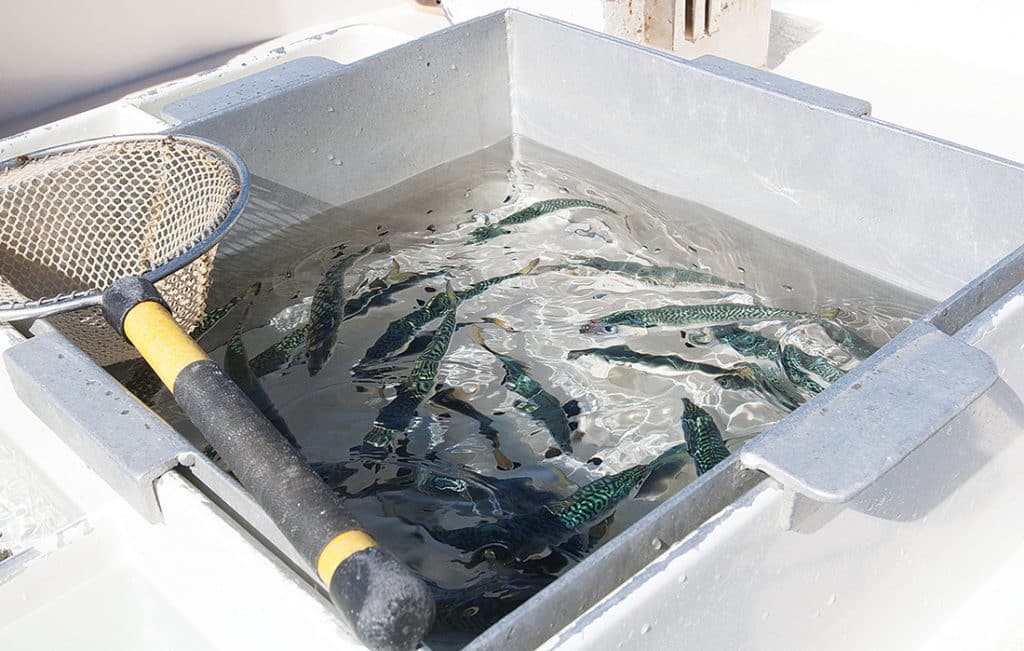
Prieto fishes live bait approximately 95% of the time, demonstrating the critical importance of the SoCal live-bait fishery. Depending on yearly and seasonal variations in bait prevalence, the preferred baits are typically sardines, anchovies, or mackerel. The weight of the tackle to be used depends on the size of the baitfish.
For tuna up to 50 to 60 pounds, “my go-to live-bait rig is a 65-pound braid main line to a 25-pound mono leader,” says Prieto. “The diameter of the braid gets so thin that 65 pounds is about as light as I get.” On my boat, braid weighing up to 80 pounds is typical. The lighter line is easier to cast. ”.
Put your thumb to the spool as soon as the live baitfish hits the water when casting it to avoid creating a bird’s nest. It used to be necessary to cast a 50-wide mono line in order to present large baits to monster tuna. According to Prieto, this “required the angler to ‘kick-start’ the reel with their hand to get the spool moving.”
Today’s anglers need to use heavy 80- to 100-pound braid to make a decent cast when throwing large baits, like mackerel. Braid facilitates casting, so the leader may only be a few feet long.
According to Carson, “small sardines were the only bait available off Guadalupe Island this year.” To get a bite from a tuna weighing more than 100 pounds, fishermen had to utilize 80-pound braid and a 4- to 5-foot section of 80 fluorocarbon. To help pitch the bait away from the boat, the live-bait rods measured seven to eight feet in length. ”.
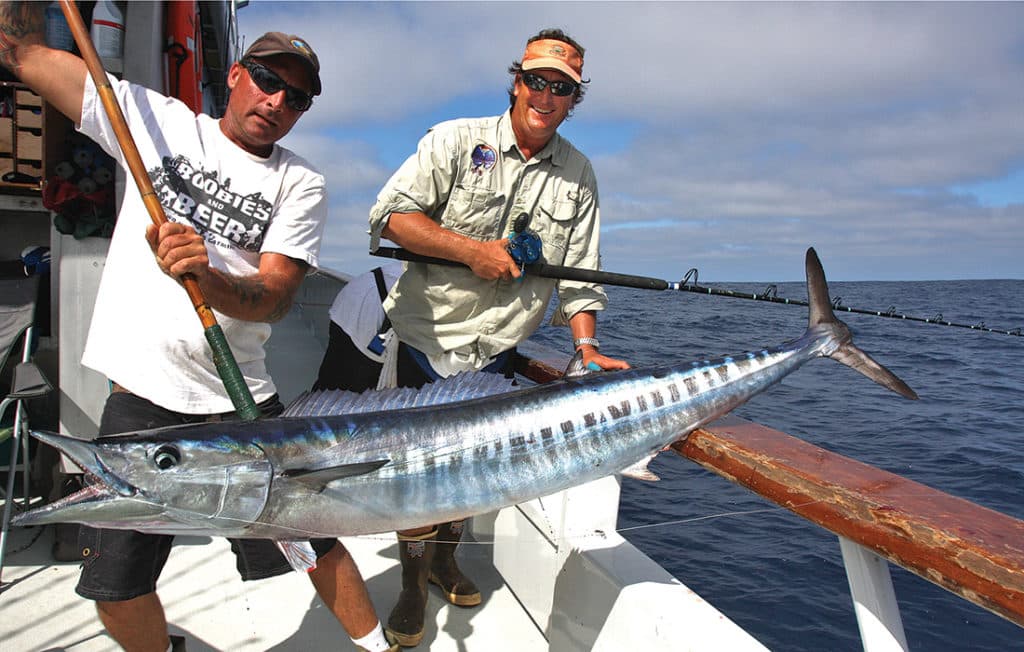
Named for the moment he first witnessed it in 1983 on the Prowler sport-fishing boat, Carson refers to a custom of casting large live baits as the Prowler Boat Flip.
“With the right hand, it’s an underhanded flip that can cast 40 to 50 pounds of mono,” says Carson. “Yank the mono line with your left hand as you flip with your right to get the reel spinning at the exact same speed as the cast.” Anglers used to cast anchovies or other small baits away from the boat in this manner in the 1980s.
“This was a very difficult method to master, so thankfully lighter rods and reels, plus braided line, help casting today,” Carson continues. “Capt. Mike Lackey, of long-range boat Vagabond out of San Diego, is still very good at this technique.”
FAQ
How do you reel a deep sea fish?
What size rod and reel for deep sea fishing?
Can you use a spinning reel for deep sea fishing?
How do you spool an offshore reel?